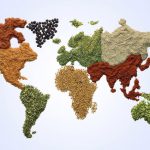by Chris Mooney, Washington Post
Six years ago, in a bracing 18-minute TED talk, coral reef scientist Jeremy Jackson laid out “how we wrecked the ocean.” In the talk, he detailed not only how overfishing, global warming, and various forms of pollution are damaging ocean ecosystems — but also, strikingly, how these human-driven injuries can be harmful to those who live on land.
Toxic algal blooms, for instance, can actually damage air quality near the coast. “The coast, instead of being paradise, is harmful to your health,” he said.
We saw a striking example of this earlier this summer off the coast of Florida, when a toxic bloom that began in Lake Okeechobee — fanned by high levels of nitrogen and phosphorous pollution — spread to Florida’s coast after flows from the swollen lake were released to keep water levels down.
Now, unfortunately, new research suggests yet another example. In a new study published Monday in the “Proceedings of the National Academy of Sciences,” a team of researchers find that Vibrio bacteria, tiny marine organisms capable of causing deadly infections in both human and also fish, are becoming more prevalent in the North Atlantic coastal region as ocean waters warm. (We’re causing that overall trend of warming, of course, by driving climate change, though there are also natural oscillations at work here.)
Indeed, human infections caused by these critters are also on the rise. The research finds these are growing at an “unprecedented rate” along the U.S. Atlantic coast and also the coasts of Northern Europe.
“We were able to demonstrate that there was an increase in the numbers of vibrios, probably a two or threefold increase, correlated with the increase in climate temperature, and then correlated with outbreaks of vibrio infections that have been recorded in the medical records,” said Rita Colwell, a microbiologist at the University of Maryland who is a co-author of the study, and who was also formerly administrator of the U.S. National Science Foundation.
Colwell published the study along with researchers from the University of Genoa in Italy, the University of Plymouth in the UK, and other U.S. and global institutions.
Vibrio are very simple organisms, but nonetheless capable of causing severe damage. Vibrio also come in many species — some are responsible for causing cholera. Another species, Vibrio vulnificus, was dubbed “highly lethal and is responsible for the overwhelming majority of reported seafood-related deaths in the United States” in a recent scientific paper.
This species of vibrio can not only poison us through food, but can cause deadly infections to people who swim with cuts or wounds, into which the bacteria can enter.
According to the Centers for Disease Control and Prevention, there are 80,000 cases of vibriosis in the U.S. annually, the vast majority from consuming seafood. Vibrio also thrive in warmer sea waters, suggesting the risk is greater in the summer — which, of course, is when people are in the water or near beaches, consuming seafood.
The new study examined 133 samples of long-term marine plankton levels from across the North Atlantic region, and then analyzed the vibrio content within them, in proportion to other bacteria levels. The samples dated back about a half century.
In eight out of nine regions of the North Atlantic, the study found that as temperatures warmed, numbers of vibrio bacteria also grew. Furthermore, it also showed a relationship between growing vibrio numbers and growing vibrio cases in humans, a relationship that was particularly pronounced during heat waves. “An increased Vibrio concentration in seawater as a result of ocean warming can be concluded to be linked with increased incidence of environmentally acquired infections,” the study concludes.
When asked if growing numbers of vibrio are just one kind of deleterious changes to the ocean brought on by climate change — changes that, in turn, can harm us — Colwell responded, “The answer to that would be yes. It’s a disruption of the natural pattern, and it will be selecting for a number of species, and that’s the problem.”
“What this new research does is present evidence of the increased prevalence of these bacteria over broad regions of the North Atlantic from preserved samples collected over 54 years,” said marine ecologist Donald Boesch, president of the University of Maryland Center for Environmental Science, who was not involved in the research. “The prevalence of these bacteria has increased as the ocean has warmed, both as result of global warming and multi-decadal variations in ocean circulation. This trend may be caused by changes in the plankton community rather than just the temperature alone. In other words, increased prevalence may be an ecosystem-level effect of climate change.”
“The relationship of these trends with the incidence of the human diseases reported caused by Vibrio species as reported in the paper is less-convincing, particularly because the long-term plankton monitoring was not conducted off the US coast,” adds Boesch. “Nonetheless, there is ample other information on this relationship to counsel increased vigilance in protecting public health from these natural environmental pathogens in our warming world.”
So in sum, it’s more evidence supporting Jackson’s point — we don’t just damage the oceans even as we ourselves go unaffected by the consequences of that damage. Rather, from harm to fisheries to direct human health threats, that damage hurts us, too.
“I think the public would not expect that the oceans would have that direct impact on human health,” said Colwell.











